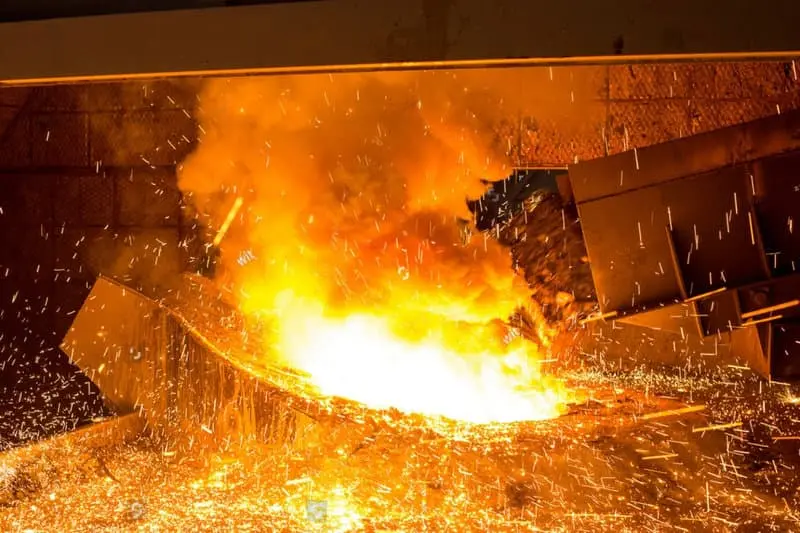Trong lĩnh vực gia công kim loại, nhôm được sử dụng rộng rãi do tính dẫn điện tuyệt vời của nó, thermal conductivity, and plasticity. Melting aluminum is a critical step in the aluminum processing chain, and choosing the right furnace is essential for ensuring melting efficiency, product quality, và bảo vệ môi trường. This article explores the types of furnaces commonly used for melting aluminum and their characteristics to help readers make informed decisions.
1. Electric Furnace
Electric furnaces are among the most common equipment for melting aluminum, offering precise temperature control and a clean melting process. They are mainly categorized into two types: induction furnaces and resistance furnaces.
Lò nung cảm ứng: This furnace uses electromagnetic induction to generate eddy currents within the aluminum ingot, enabling rapid and uniform heating. Induction furnaces are highly efficient, providing precise temperature control and high energy utilization, making them the preferred choice for large aluminum processing companies.
Resistance Furnace: In this type, aluminum is heated by the current passing through resistance elements. Although the heating speed is relatively slower, resistance furnaces feature a simple structure, easy maintenance, and low costs, making them suitable for small to medium-sized aluminum melting operations.
2. Gas Furnace
Gas furnaces utilize combustible gases such as natural gas and propane to melt aluminum through combustion-generated high temperatures. They offer fast heating and high thermal efficiency, making them ideal for situations requiring significant heat energy, especially when power supply is limited. Tuy nhiên, gas furnaces produce higher emissions and must be equipped with comprehensive ventilation systems and exhaust gas treatment devices to meet environmental protection requirements.
3. Oil Furnace
Similar to gas furnaces, oil furnaces melt aluminum using the high temperatures generated from fuel combustion, typically employing liquid fuels like diesel. While oil furnaces still have specific applications (ví dụ., in areas with inadequate electricity), their usage is gradually declining due to increasingly stringent environmental regulations and the push for cleaner energy sources.
4. Selection Guide
When choosing a furnace for melting aluminum, consider the following factors.
- Production Scale: Determine the appropriate furnace type and capacity based on annual output and daily melting volume. Large aluminum processing enterprises should prioritize efficient, energy-saving options like induction furnaces.
- Energy Supply: Select the most suitable furnace type based on local energy availability and costs. Areas with reliable electricity and reasonable rates may favor electric furnaces, while regions rich in natural gas or facing electricity limitations might opt for gas or oil furnaces.
- Environmental Protection Requirements: With increasing environmental regulations, it’s vital for enterprises to consider emissions and environmental performance. Low-emission and easy-to-maintain furnaces can help mitigate environmental risks and reduce operating costs.
- Cost-effectiveness: Evaluate factors such as purchase, operating, and maintenance costs to choose the most cost-effective furnace type.
Tóm lại, selecting the right furnace for melting aluminum is crucial. By thoroughly understanding the characteristics and applications of various furnaces and carefully considering the specific needs of your operation, you can ensure an efficient, stable, and environmentally friendly melting process.

